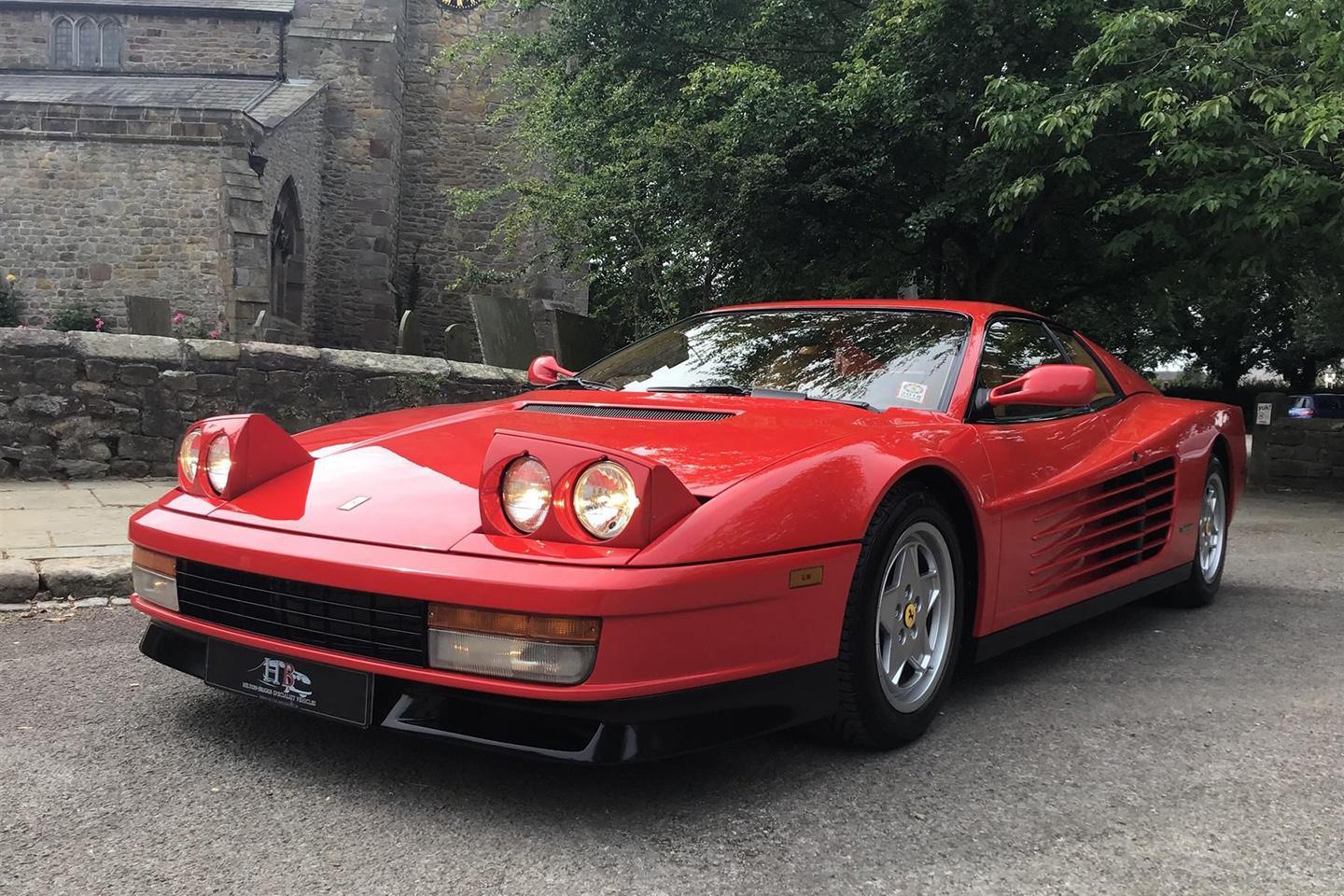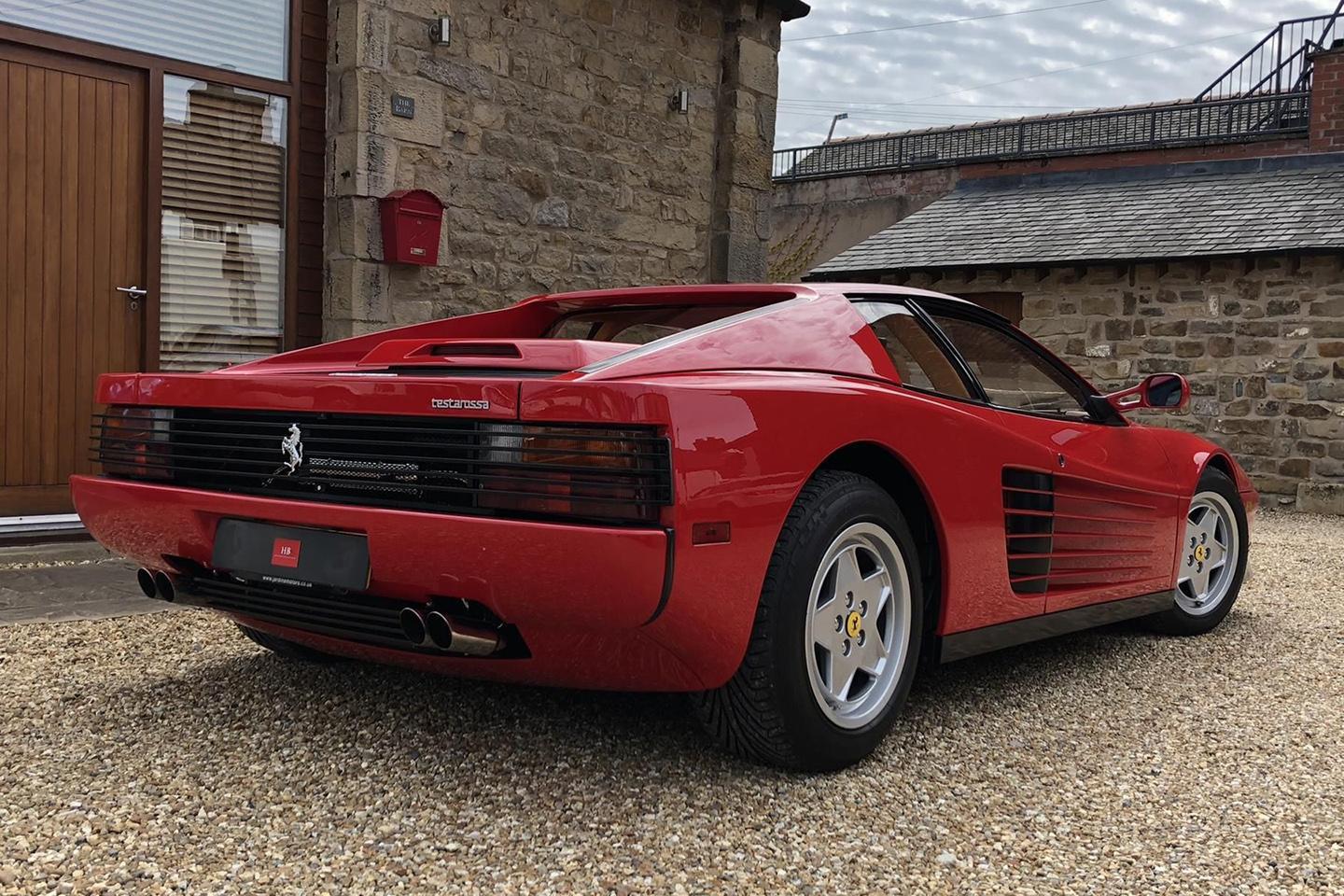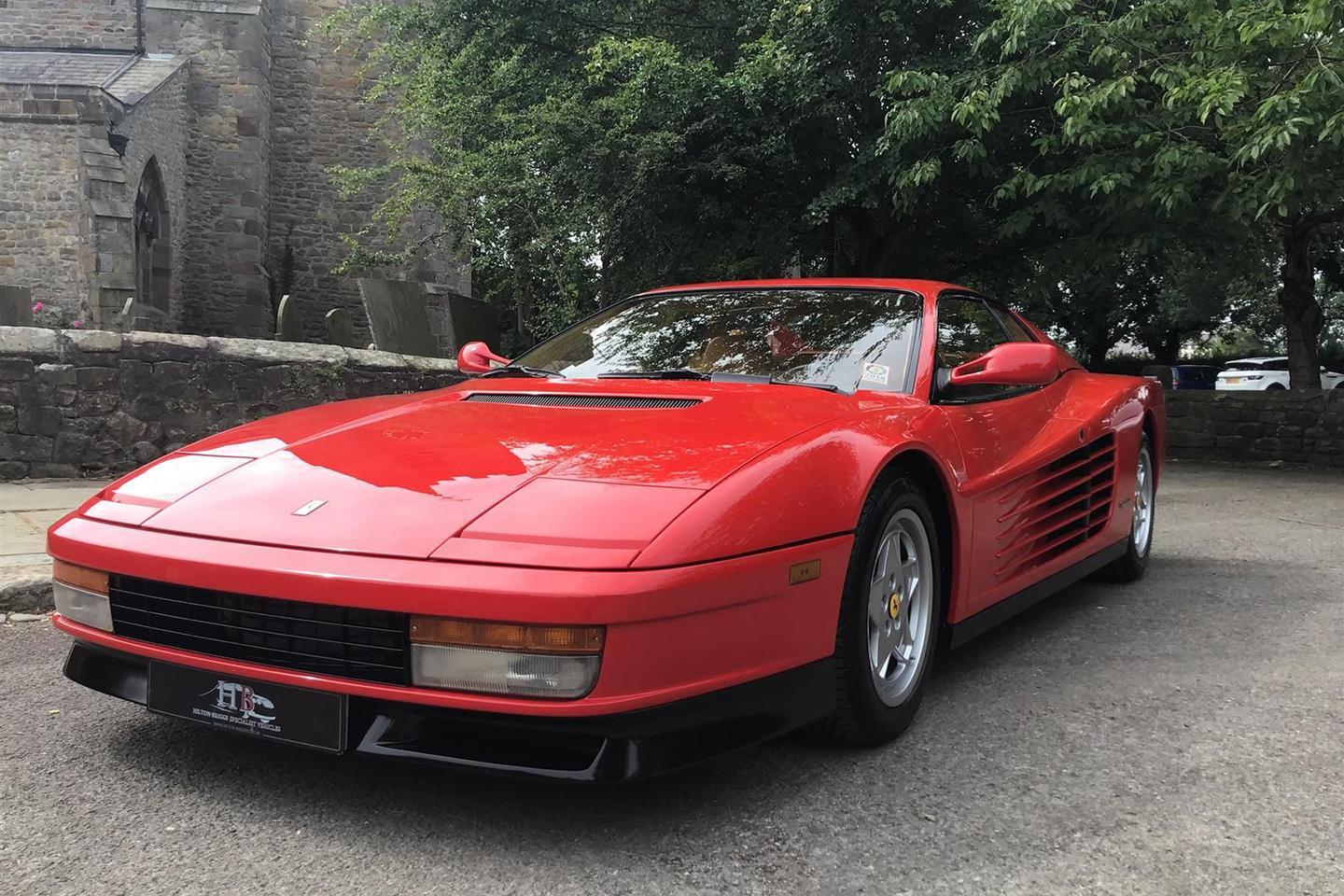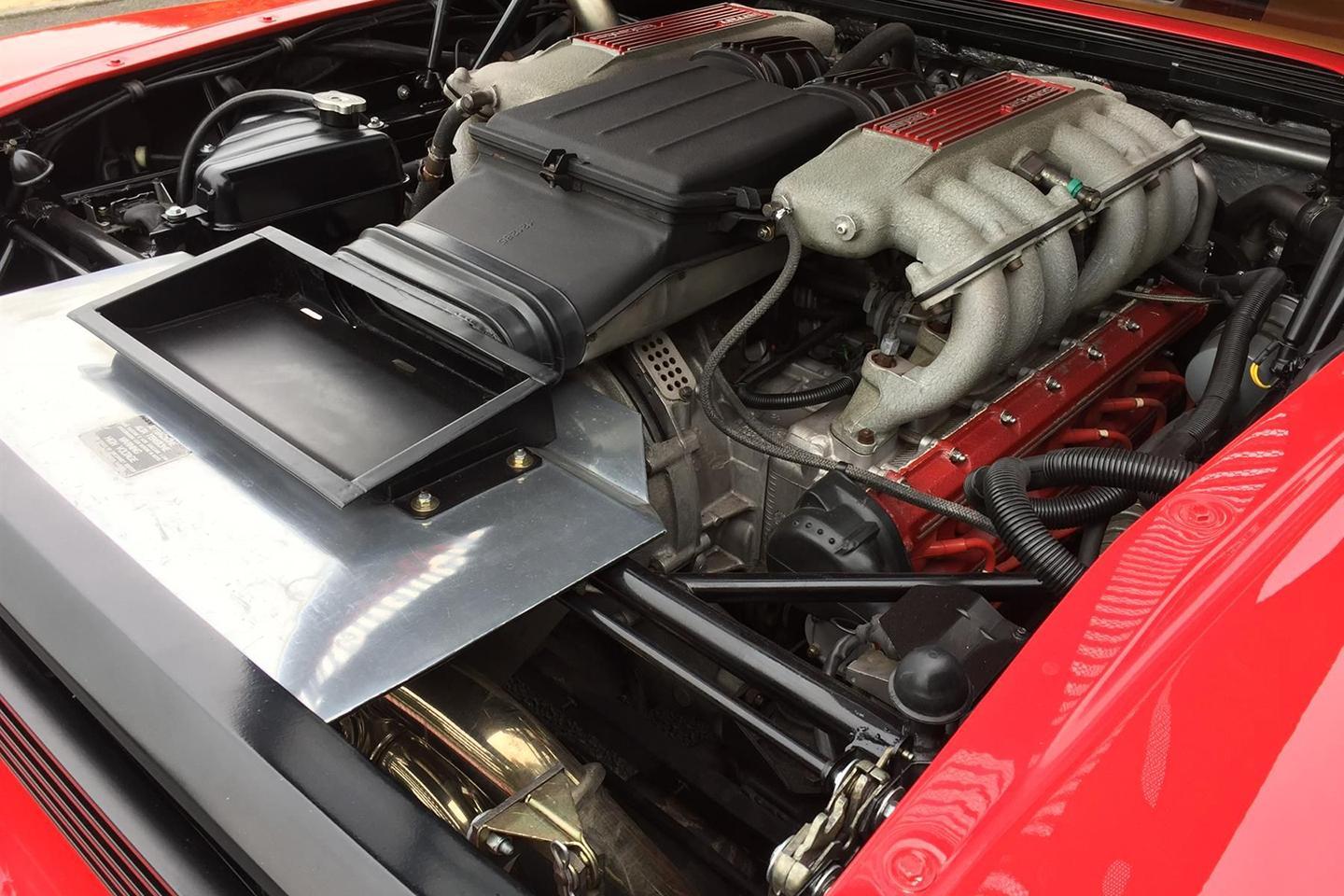Ferrari Testarossa | The Brave Pill
There's standard 12-cylinder Ferrari brave, and then there's temptingly priced Testarossa brave...

Nostalgia is clearly not quite as good as it used to be. After years in the doldrums values of the Ferrari Testarossa started to climb hard in the early 2010s, and for a while it seemed they would never peak. Prices for all Ferraris were rising at the time, but there was also a definite sense - fanned by some hagiographic stories - that the Testarossa's time had finally come, and it would be recognised as one of the true greats.
Things quickly got silly. Seemingly overpriced Testarossas became a source of amusement for those who remembered the still-recent period when even good cars struggled to get much past £30,000. Overpriced but for the fact they sold, values climbed higher. For a while it seemed that only the shabby and obviously wrong would fail to make six figures.
Yet it didn't last. Yearning for this bit of the past could only propel the values of what remains one of the most numerous Ferraris so far. In the last couple of years both advertised prices and auction results have started to return to earth. Bringing us to what would have recently seemed the unlikely prospect of this week's Pill - a decent-looking Testarossa with evidence of copious recent spend, yet a price tag that starts with a six. (Albeit only by a fiver.)

The Testarossa has been an opinion splitter since it made its show-stealing debut at the 1984 Paris Motor Show. Ferrari didn't have much in the way of engineering budget back then, so it had been developed on the underpinnings of the existing 512BB, itself the ultimate incarnation of the 365 GT4 Berlinetta Boxer that had been introduced as long ago as 1971. Like its Boxer predecessors the Testarossa would use Ferrari's monstrous flat-12 engine - technically a flattened V12 rather than a true boxer - with this upgraded 4.9-litre version gaining electronic fuel injection and four-valve cylinder heads, with output rising to 385hp.
The bigger change was to the Testarossa's structure, in response to one of the biggest problems of the BB. The earlier car had used front-mounted radiators, which both took up all the space under the bonnet, but also directed hot water flow through the cabin. The combination of a sweltering interior and near-total lack of luggage room meant that Boxer owners were easy to spot at grand hotels: they were the stinky ones wearing the same clothes for three days running.
For the Testarossa, Ferrari decided to move the radiators to the rear. But as the cabin remained almost exactly the same size this required the Testarossa to expand substantially; at very nearly two metres in width modern hypercars are only just catching up with it. Rather than trying to disguise the increase in bulk the Pininfarina design team, led by Leonardo Fioravanti, decided to celebrate it, giving the Testarossa both a dramatically squared-off rump and the distinctive door strakes than ran back to cover the radiator vents. The same styling feature was used by the smaller 348 that followed, and soon inspired a rash of Dimma-style conversions of lesser cars.
As launched the Testarossa was as '80s as Michael J. Fox listening to T'Pau on a Walkman at a rollerdisco, but its wider cultural significance was cemented - certainly in the minds of the world's teenage boys - by two glorious cameos. The first was in the Outrun video game in which a fictionalized spider version raced through a scrolling course at huge speeds before inevitably colliding with either a blockily rendered Porsche 930 Turbo or a palm tree. The console version devoured about 90 per cent of my pocket money between 1986 and 1988.

The Testarossa's other starring role was, of course, Miami Vice, where Don Johnson's detective Sonny Crockett drove a white example in the later series of the TV show, reportedly after Enzo Ferrari grew frustrated by the tight-fisted production company's previous decision to use a modified Corvette to play a Daytona.
There was plenty of action in Miami Vice - ironically often portrayed by replica stunt cars - but the Testarossa was always more of a lover than a fighter. Early road tests were positive, but they tended to concentrate on the car's abilities as a fast and stylish grand cruiser rather than portraying it as a ravenous apex predator. Although the flat-12 engine was low it sat on top of the gearbox, giving a higher than optimal centre of gravity. Throw in the cartoon physics of a 40/60 front-rear weight distribution and no traction control and serious respect was due.
Against the most obvious alternative, the Lamborghini Countach, the Ferrari was reckoned to be softer, more civilised and easier to live with - but missing out on the theatre of the Lambo's upward opening doors. The Testarossa was a smash hit - Ferrari made more than 7,000 - with the 512TR and F512M evolutions pushing the total beyond 10,000 cars.

But the end of the supercar boom in the early 1990s quickly tipped the balance between supply and demand onto its head. Values slid and then, as the investors who had piled into an expanding bubble rushed out, slumped. Within a few years of the last examples being sold the Testarossa had become something of a whipping boy for both speculative greed and perceived 'eighties excess, the cleaner and curvier styling direction Ferrari subsequently adopted making it look old very quickly.
Lower values led to less affluent owners, many of who objected to the frequency of the Testarossa's recommended maintenance regime, especially the tri-annual need to remove the whole engine so that new timing belts could be fitted. The good news is that, by '80s Ferrari standards, the flat-12 engine is reckoned to be impressively tough and a well-maintained example is capable of taking both mileage and hard use without complaint. One of the bigger risks is actually with lack of use, resulting in gummed-up fuel metering heads and degraded oil.
But no 12-cylinder Ferrari is going to be cheap to run, a point made by our Pill. It is a 1990 left-hooker that was originally sold in the U.S. - original RHD versions still command a chunky premium. According to the vendor it came to the UK in 2015 and has had two owners since then. The seller claims it was already a good car, but also that it has had £30,000 spent on it since reaching Blighty. Six grand a year is an indication of just how spendy a car like this can get, although it does back up the advert's claim that it is a properly sorted one - despite being the cheapest currently offered in the classifieds.
The seller's enthusiasm to move it on seems due to the desire for a replacement with both right-hand drive and power steering; offers for a trade against a 550, 599 or 458 are all invited. It certainly seems priced to sell quickly in what is normally a slow-moving part of the market, although anyone buying it will also need to budget for a new wardrobe of linen suits, pastel shirts and slip-on loafers...


Gassing Station | General Gassing | Top of Page | What's New | My Stuff




